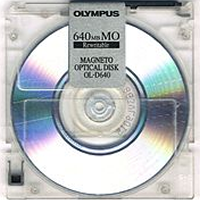
The history of information storage media began with a complex system of punch cards that allowed to run programs and save data for electromechanical computers.
The first external memory medium was the card. The programs and data were recorded in the form of intact (zero) or perforated (one) areas on appropriate card cards, divided into eighty columns, in the format of a dollar. But already around 1950 there was a first great revolution with the introduction of magnetic tapes, already used for audio applications. One of the major structural constraints of tapes was sequential reading, which required the tape to run mechanically to achieve the desired information, with obvious performance degradation in accessing information. Magnetic tapes are still, however, an important technology for the storage of information, especially in medium and large companies.
The technological breakthrough in the storage of digital information on external media to the computer was the creation in 1955 of the so-called Hard Disk Drive (HDD), consisting of an electromagnetic reading head, suspended above a high-speed rotating aluminum plate, able to read information that swiftly flowed under the head itself. The key point of the discovery was that the cartridge should not be in contact with the platter, which could rotate at high speed and thus allow the desired information to be reached "almost directly", unlike the tapes. The first HDD produced was IBM’s 305 RAMAC (Random Access Method of Accounting and Control) announced on September 13, 1956. This device could store 5 million characters (about five megabytes, but a "character" consisted of seven bits) on 50 large disks, each 24 inches (about 60 cm) in diameter. The recording density was about 2000 bits/inch 2 (or 310 bits/cm2 ). Current disk devices have densities of the order of billions of bits per square centimetre. The data transfer rate was already very high: 8,800 bytes/s.
In the following years the technology has progressively improved, both in the recording density, in the total storage capacity, and finally in the access times to the individual recording units (the so-called records).
In 1973 IBM announced the Disk Drive model 3340, which is now considered the progenitor of modern disks. This device consisted of two separate disks, one permanent and one removable, each with a storage capacity of 30 Mbytes.
The first floppy disks appeared in the early 1970s. These were large discs (8" in diameter, about 24 cm) of plastic material covered with magnetic material. Over the years they underwent a process of size reduction and were covered with a plastic case to protect them from external environmental factors. While the first floppy contained just 80 kilobytes, in their most advanced form (3.5-inch format) they come to contain 1.44 megabytes.
Born in the mid-1980s, the CD-ROM (Compact Disc acronym - read only memory, compact disk - read only memory) is an evolution of the Cds previously used to store text and graphic data. The original data retention format was devised by Sony and Philips, but was revised in later years. Each CD contained up to 700 megabytes, equivalent to 486 floppy disks.
Physically identical to CD-Roms, Dvds appeared in the mid-1990s. Using different data storage materials and different data reading and writing techniques, they contain much more information than a single CD. With its 4.7 gigabytes capacity, it is equivalent to about 7 CD-Roms.
The mass storage device "plug-and-play" (literally, attacks and uses), equipped with Flash memory and Universal Serial Bus (USB) interfaceUSB flash drives were immediately successful due to their portability and the ability to write and erase data at will. Today USB flash drives contain up to 125 gigabytes of data, equivalent to about 140 Dvds.
In recent years, data storage media have been dematerialized. Thanks to the increasing spread of the Internet and the need to be able to access their files from any place and at any time, Data storage can take place on servers of companies by entities that guarantee their protection and make them available on request whatever the device connected to the network.
More and more cloud storage services have arisen: by accessing your cloud storage account you can browse existing files or create others. According to some calculations, the cloud would contain up to 1 exabyte of data (1 trillion bytes, equivalent to 1 million terabytes), more or less 500 thousand 2-terabyte hard drives; 8 million 192 thousand 125-gigabyte USB drives; About 218 million Dvds and 9 million billion punched cards.
Lorem ipsum dolor sit amet, consectetur adipiscing elit, sed do eiusmod tempor incididunt ut labore et dolore magna aliqua.
Lorem ipsum dolor sit amet, consectetur adipiscing elit, sed do eiusmod tempor incididunt ut labore et dolore magna aliqua.
Lorem ipsum dolor sit amet, consectetur adipiscing elit, sed do eiusmod tempor incididunt ut labore et dolore magna aliqua.
Lorem ipsum dolor sit amet, consectetur adipiscing elit, sed do eiusmod tempor incididunt ut labore et dolore magna aliqua.
Lorem ipsum dolor sit amet, consectetur adipiscing elit, sed do eiusmod tempor incididunt ut labore et dolore magna aliqua.
Lorem ipsum dolor sit amet, consectetur adipiscing elit, sed do eiusmod tempor incididunt ut labore et dolore magna aliqua.
MAIN MEMORY
The first memory devices were electromechanical switches, or electronic relays and tubes. In the late 1940s, the first computers with stored programs used ultrasonic waves in mercury tubes or charges in special electronic tubes as their main memory. The latter were the first random access memory (RAM). RAM contains memory cells that can be accessed directly for read and write operations, as opposed to serial access memory, such as magnetic tape, where access to each cell in sequence is required until the requested cell is detected.

MEMORY BY MAGNETIC DRUM
Magnetic drums, which had attached / writing heads to each of the numerous tracks on the outer surface of a rotating cylinder coated with ferromagnetic material, were used for both primary and auxiliary memory in the 1950s, although their access to the data was serial. The device consists of two separate parts: the drum and the sensor block. The device as a whole provides that the drum, free to rotate independently of the rotation of the cylinder, is inserted into the sensor block.
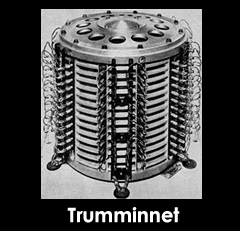
MEMORY WITH MAGNETIC CORE
The most common form of memory with magnetic core was constituted by ferrite nuclei on which were made rings crossed by wires that served to carry the signals of memory management. Each ring stored a single digital state, each two-dimensional grid was accessible in a single clock cycle and allowed the manipulation of a single ring. By appropriately stacking a number of grids one could obtain the reading or writing of a word in a single clock cycle.
Magnetic rings based their ability to store information on the hysteresis of ferromagnetic material. Only the addressed ring was affected by a magnetic field sufficient to change the polarity of the magnetic field.The current flowing in the wires induced an electromagnetic field that combined in the ring altered its polarity.
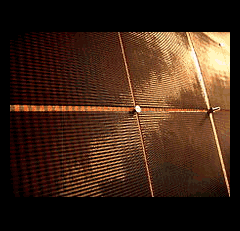
SOLID STATE MEMORY
Semiconductor memory is a computer memory in which information and data are recorded through semiconductor technologies such as transistors, integrated circuits and chips. Semiconductor memory is composed of elementary cells, each of which may contain an information ( bit ) in the form of a capacitor’s electric charge, which make up a matrix similar to a digital bulletin board/whiteboard. Semiconductor memories are mostly volatile memories (data is kept in memory until the device is powered by electricity, at the time of shutdown the information is lost). Semiconductor memories, thanks to their characteristics, are one of the main components of the central memory of the computer
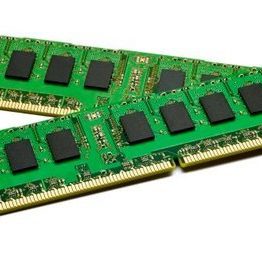
MAGNETIC TAPE
Magnetic tape is a tape composed of polyester and iron oxide which is wrapped in a coil, the whole has total width of a few inches. The use of magnetic tape has spread during the sixties and seventies remaining in use until the 2000s, its diffusion has rendered obsolete the previous methods of recording data on perforated cards and perforated tape. Magnetic tape allows you to record and read data in electromagnetic form, while taking up little space; a coil of magnetic tape used as a mainframe can hold thousands of meters of tape and record 800/1600 bits per inch.
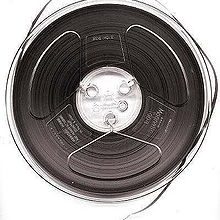
OPTICAL DISKS
Optical discs such as Cds and compact disks store by using a laser that cuts the metal surface of the disks through grooves. When the information is to be read the laser retraces the surface of the disc and according to the angles of the refraction of light of the various points of the surface the reader determines the corresponding data.
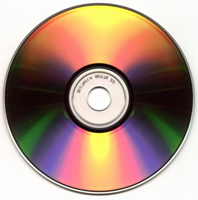
MAGNETO-OPTICAL DISCS
A magneto-optical disk is a storage medium introduced in the late 1980s that combines the properties of optical media with those of magnetic media. Although the magneto-optical disks inherit many properties from optical media these do not need particular file systems to work, in fact these are recognized by the operating system as hard disk and as such are rewritable.
